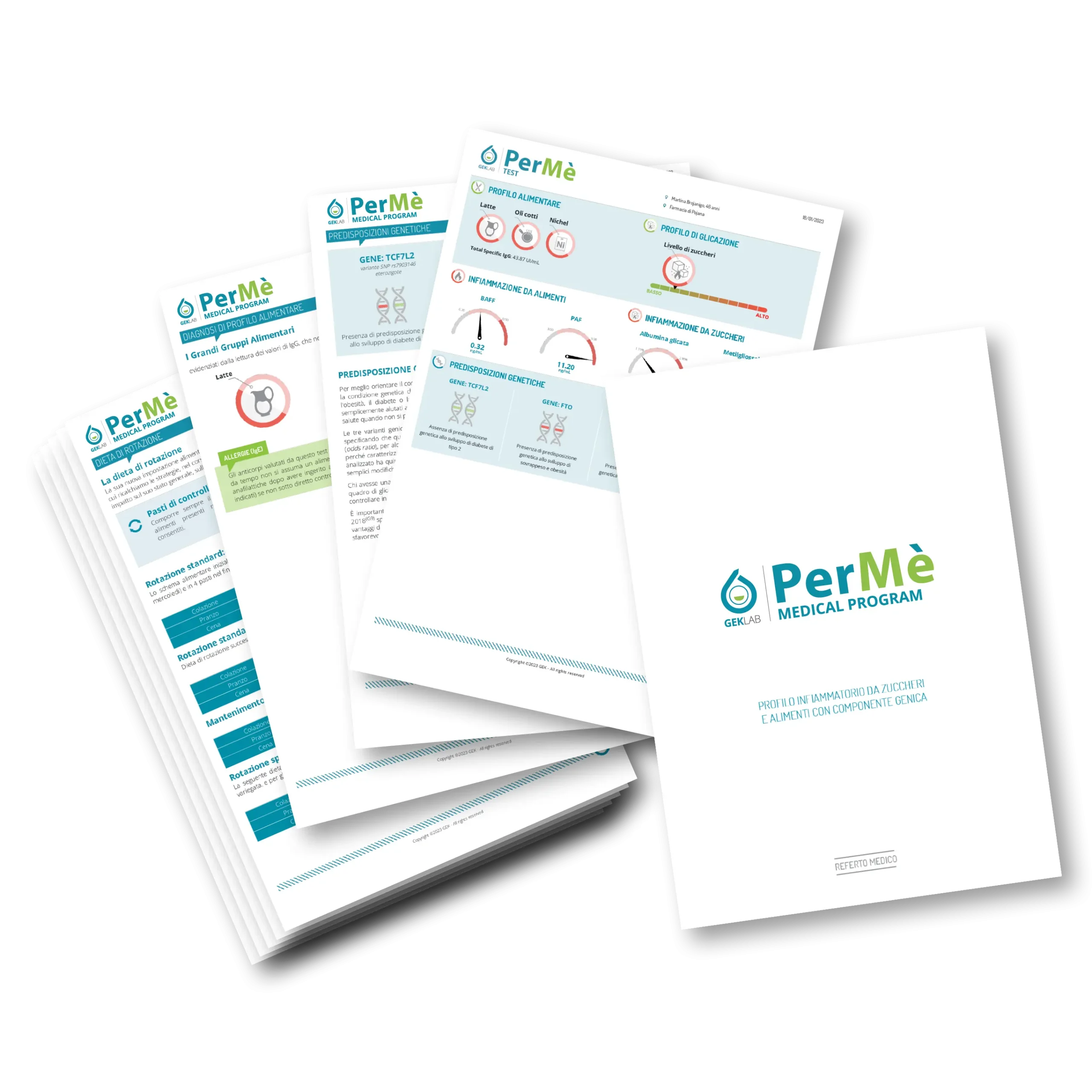
Hepatic steatosis, also known as “fatty liver,” is a highly prevalent condition, including in Italy, affecting approximately 25–30% of the adult population not suffering from other diseases.
A striking fact concerns children: 15% are affected by a condition of hepatic steatosis.
If left unmanaged, fatty liver can progress to clinically serious conditions, including liver cirrhosis or even liver cancer.
Human DNA contains all the information that defines each individual. Specifically, this information is encoded within genes.
Assessing whether one has a genetic predisposition to certain conditions, including fatty liver disease, makes it possible to implement dietary and supplement strategies—even as a preventive measure.
The presence of a specific genetic variant (SNP) in the PNPLA3 gene is indeed associated with the development of fatty liver.
It indicates a 3.5-fold higher risk of developing fatty liver disease compared to the population without this genetic predisposition. It does not mean that the disease will certainly develop, but it helps to understand whether there is a structural, genetic factor that may facilitate its onset.
Nutrition—especially the personalized management of sugars and related substances—plays an essential role in both prevention and treatment.
A study published in JAMA showed that in children who followed a diet where the intake of simple sugars was limited to 3% of daily caloric intake, diseased liver tissue was reduced from 25% to 17%. In contrast, the control group showed only a one-percentage-point reduction.
Understanding if there is a genetic predisposition to fatty liver disease and implementing personalized dietary strategies allows one to avoid a potentially debilitating pathological condition.
The PerMè Medical Program, the Glyco Medical Program, and the screenings allow for the analysis of any genetic predisposition to the development of fatty liver disease
A cura della Redazione Scientifica GEK Lab
Articoli correlati
No post found!


